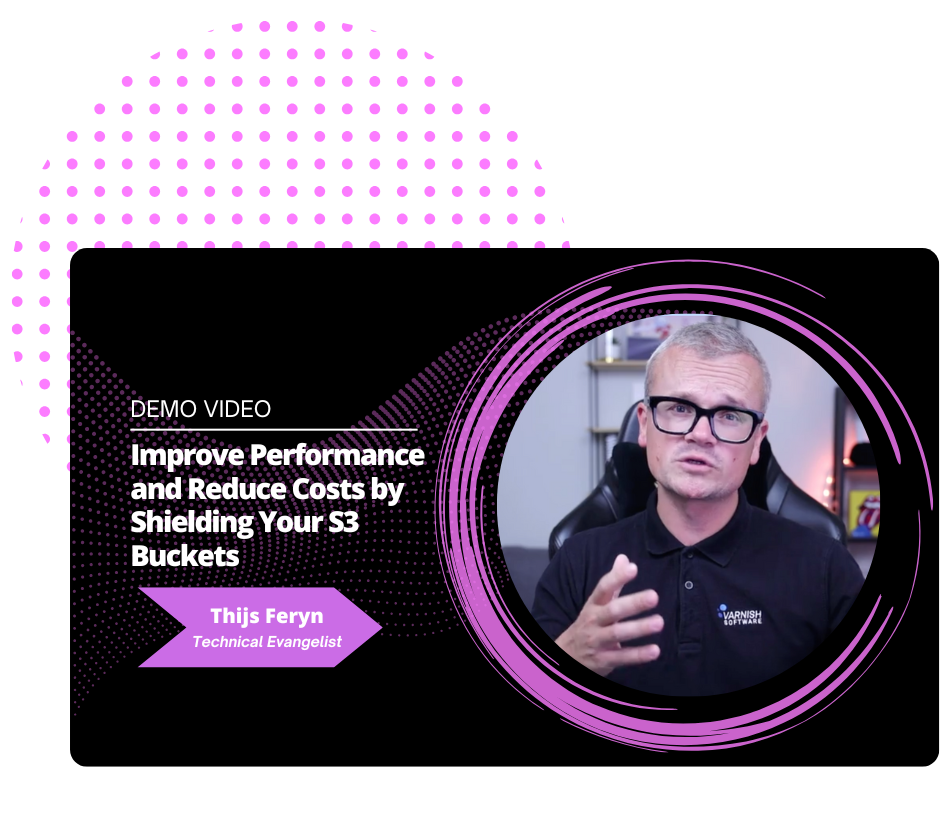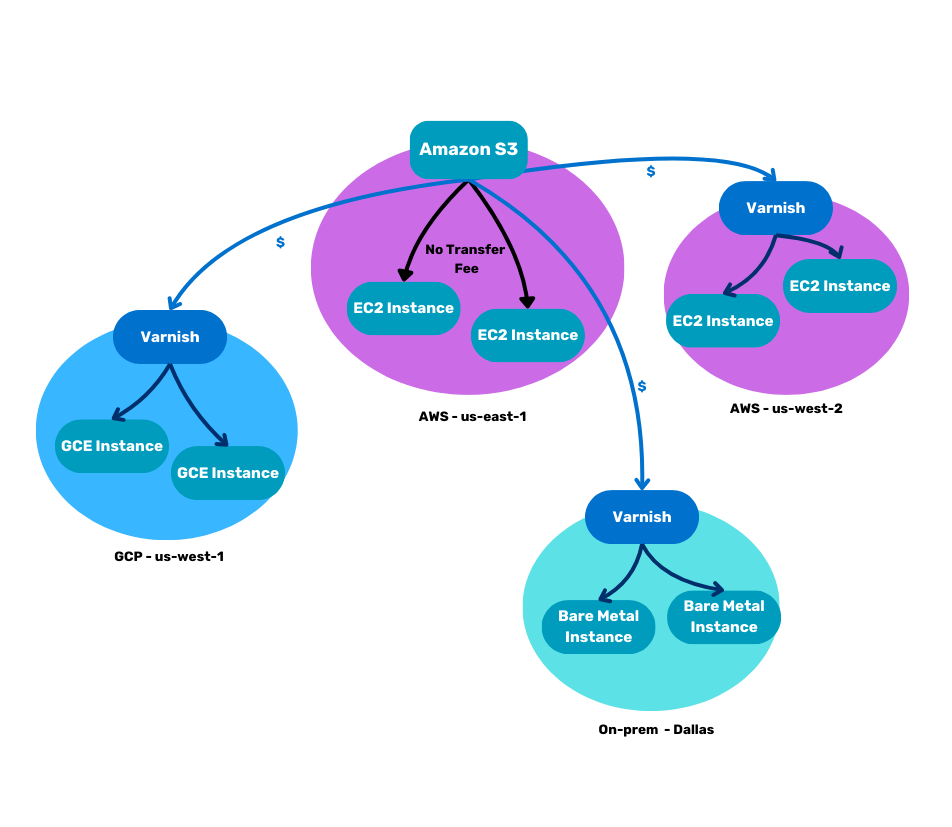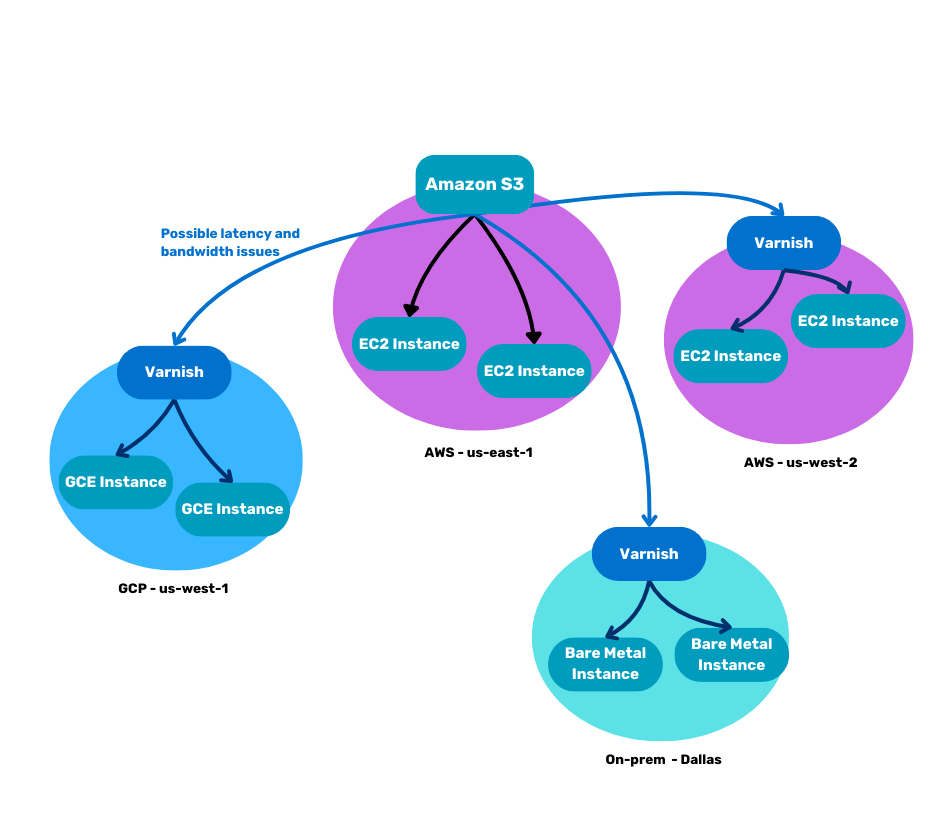S3, Object Storage and Cloud Optimization
Enhance performance and reduce costs with a caching solution tailored for S3 workflows
Advanced Caching for Faster, Cheaper Cloud Data Access
Varnish S3 Shield is an advanced caching solution designed to optimize data access in S3-based workflows, enabling businesses to reduce costs and improve performance for cloud operations. By caching frequently requested objects closer to end-users, it drastically reduces the need for repeated S3 API calls and long-distance data transfers, cutting egress fees and minimizing latency. The software-based solution readily integrates with Amazon S3 and other storage solutions that implement the S3 API.

Solving S3 Challenges
Optimize Cloud Costs and Supercharge Performance
As cloud storage demands grow, businesses face rising egress fees, increased latency, and soaring API call costs when accessing data from Amazon S3. These challenges can be amplified by cross-region data transfers or multi-cloud environments. Whether deployed in the cloud, across multiple regions, or on-premise, the S3 Shield efficiently supports large-scale data workflows, allowing businesses to:
- Minimize S3 access costs by reducing API calls and egress fees
- Boost performance for data-intensive applications with reduced latency
- Achieve seamless, high-speed data delivery from local cache nodes
- Optimize hybrid and multi-cloud setups by caching S3 data in various regions or clouds

Powerful Cache Controls and Seamless Integration
Varnish S3 Shield includes a suite of features that ensure seamless deployment and integration into existing infrastructure. The caching layer is highly flexible, platform-agnostic, and capable of being deployed wherever data is accessed.

Advanced Cache Control
Fine-tune caching policies to maximize efficiency and performance.

Seamless Integration
Easily deploy without making significant changes to your existing systems.

Dynamic Backend Support
Integrate with multiple S3 endpoints, enabling scalable, resilient performance.

Authorization
Access to protected S3 buckets with native support for AWS Signature Version 4.

Fast Implementation
Utilize automation tools like Ansible, Terraform, Docker, and Kubernetes to streamline deployment.

Purge and Revalidate
Quickly update cached data when changes occur in S3, while maintaining cache performance.

Clustering
Load balancing and failover with clustered configurations, improving reliability.

Rate Limiting
Control the rate of incoming traffic, ensuring consistent performance.
Get Started
It’s easy to get up and running and optimize S3 workflows with Varnish Enterprise, using preferred tooling such as Ansible, Terraform and Docker.

“At low volumes, managed services from cloud computing providers can be low cost and perform adequately, but at ‘internet scale’ the costs can balloon and latency becomes harder to solve for. Solutions like Varnish are an important component of improving cost of ownership and performance.”

CEO, Zype
Caching S3 Objects for Cost Reduction
Varnish is a reverse caching proxy, storing S3 objects in the cache for a limited but customizable amount of time. Varnish also knows how to revalidate the content and where to fetch updates from. Fetching uncached S3 objects and revalidating expired objects will still require data transfer from the S3 bucket, but retrieving cached versions of these objects requires zero interaction with S3, reducing access to cloud resources and consequently lowering costs.

Caching S3 Objects for Latency Reduction
These same mechanisms do not just benefit cost, but can also reduce network latency. By storing a copy of the content close to the consuming user or system, the physical distance is reduced, which generally improves network latency. Depending on the interconnection between the S3 bucket and the remote sites, latency may still occur. Once the content is stored in the cache, network latency shouldn’t be a factor anymore.

Why Use Varnish Enterprise to Optimize S3 Workflows?
Varnish is known as a powerful, flexible and lightweight reverse caching proxy. It respects HTTP’s built-in caching conventions, and allows far-reaching customization of the caching policies thanks to the built-in Varnish Configuration Language (VCL).
Varnish Enterprise, the commercial version of Varnish, offers a dedicated S3 module, and a set of AWS-specific VCL scripts that allow easy access to S3 buckets that are protected by an authorization layer.

